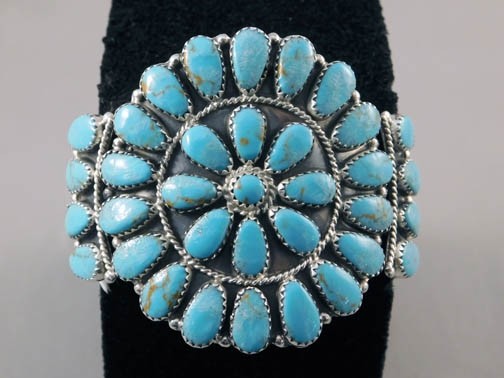Turquoise is perhaps the oldest stone in human history with handcut beads dating back to 5000 B.C. discovered in Persia. Turquoise gets its name from the Greek work “Turkois” meaning “Turkish” for it was a stone that was bought in the Turkish bazaars. Turquoise is believed to aid in positive healing energy, mental functions, communications, and as protection for the wearer. The southwestern Native American Indians believe that turquoise holds magical properties, which is why it is dominant in much of their handcrafted jewelry and artifacts. If you’re wearing a turquoise ring and you look down and see a crack in your stone, the Native Americans would say “the stone took it,” meaning the stone took the blow that you would have received..
Check out our fun list below to read interesting facts about this fascinating stone! There’s a lot to know about beautiful turquoise; the little ubiquitous stone on your jewelry has never been cooler!
• The gem was rumored to hold metaphysical properties, and because of its aesthetics, it was often a symbol of wealth and royalty.
• Many tribes believed it enhanced the strength and wisdom of its wearer.
• Other folklore runs the gamut from good fortune to deterring negative energy.
• Some cultures reserved the stone solely for the gods in whom they worshipped. This beautiful stone would be placed on masks and other religious objects. In some cases, as with the Aztecs, the wearing of Turquoise was punishable by death.
• The Navajo believed that a piece of turquoise would ensure the proper amount of rain and ideal weather for their crops. They would often give a piece of turquoise back to Mother Earth after a prayer.
• The gold or black vein that runs through turquoise is called “the matrix.” Some collectors love this; others will only shop for turquoise with no matrix; both have value, it’s merely personal preference.
• On the Moh’s scale of hardness, turquoise lands at about five or six; it all depends on the stone.
• Native American handcrafted jewelry is superior due to the fact that silversmiths use natural turquoise, meaning that the stone contains no synthetic materials or additives
Leave a comment



